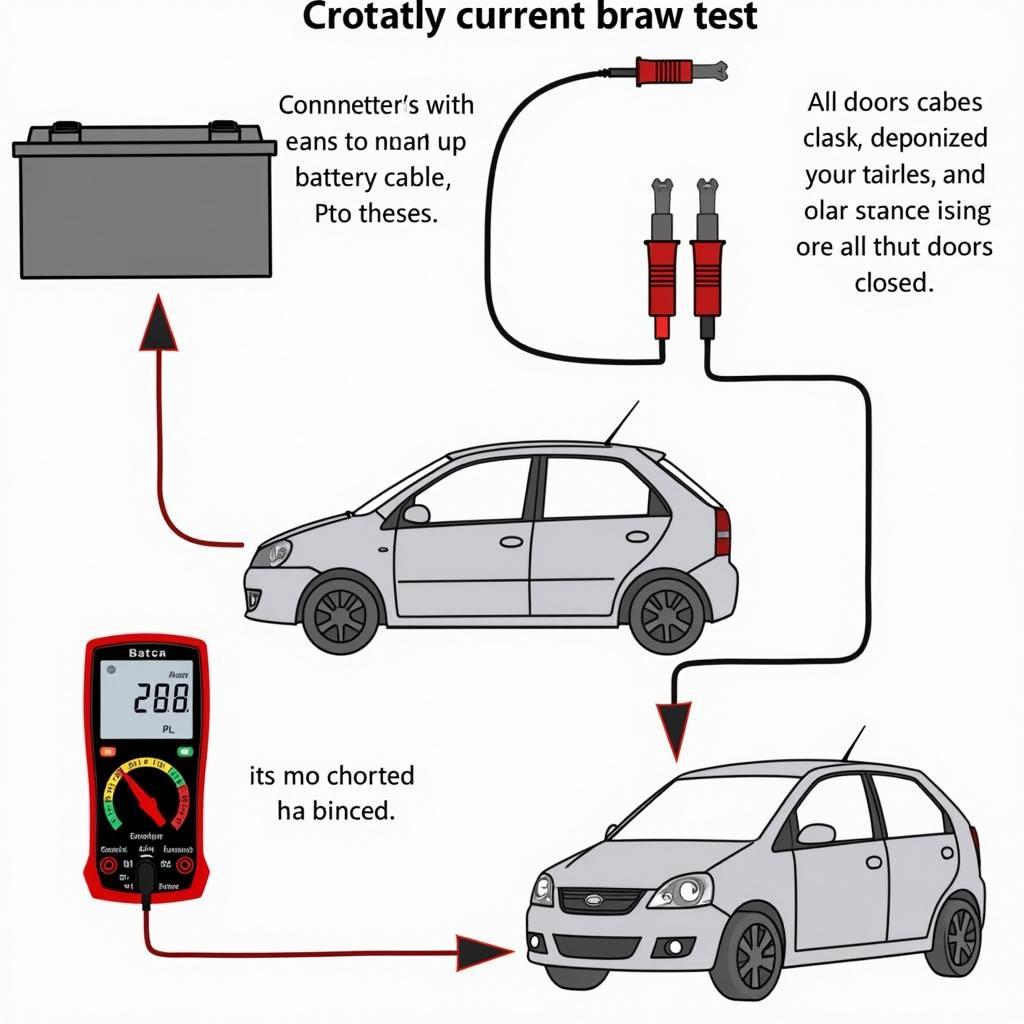A dead car battery is a frustrating experience, but before you rush out to buy a new one, perform a current draw test. This essential diagnostic procedure, also known as a parasitic draw test, helps pinpoint the culprit behind a draining car battery. In the first 50 words, we’ll introduce the crucial concept of the current draw test, which identifies excessive power consumption when your car is off.
Understanding the Importance of a Current Draw Test
A current draw test is crucial for identifying parasitic draws, those sneaky electrical gremlins that drain your battery even when the car is off. It’s a straightforward process that can save you time and money, preventing unnecessary battery replacements. This test measures the amount of current flowing out of your battery when the ignition is off, helping you identify any components drawing more power than they should. A high current draw can leave you stranded with a dead battery, especially in colder climates. Understanding how to perform this test can empower you to troubleshoot and even fix the issue yourself.
 Current Draw Test Setup
Current Draw Test Setup
How to Perform a Current Draw Test: A Step-by-Step Guide
-
Gather Your Tools: You’ll need a digital multimeter capable of measuring DC amps, ideally with a min/max function. Also have some alligator clips or test leads handy.
-
Prepare Your Vehicle: Turn off all lights, accessories, and the ignition. Close all doors, the trunk, and the hood. Ensure the car is in a quiet environment to minimize electrical interference.
-
Disconnect the Negative Battery Cable: Carefully remove the negative cable from the battery terminal. Be mindful of any jewelry or metal objects that might contact the terminal and cause a short.
-
Connect the Multimeter: Set your multimeter to measure DC amps. Connect the red lead of the multimeter to the negative battery terminal and the black lead to the negative battery cable clamp.
-
Observe the Reading: The multimeter will display the current draw. A normal draw on a car battery is typically between 25 and 50 milliamps (mA). Anything significantly higher indicates a parasitic draw.
-
Isolate the Culprit (if necessary): If the reading is high, begin systematically removing fuses one at a time, observing the multimeter reading after each removal. A significant drop in current indicates the circuit protected by that fuse is the source of the draw.
Interpreting the Results: What Does Your Current Draw Mean?
A high current draw reading suggests a problem. It could be a faulty component, a stuck relay, or even a glove box light left on. Identifying the specific circuit is the next step in resolving the issue. If you experience a Mini battery discharge, the current draw test can help diagnose the problem.
“A current draw test is like detective work for your car’s electrical system,” says automotive electrical expert, James O’Malley. “It’s a vital tool for anyone experiencing a battery drain.”
Common Causes of a High Current Draw
- Faulty alternator diode
- Interior lights left on
- Glove box or trunk light staying on
- Malfunctioning radio or amplifier
- Faulty door lock actuators
- Aftermarket accessories improperly installed
If your car battery wont jump start, a current draw test can help determine if a parasitic draw is the underlying cause. Similarly, if you own a Passat and experience a Passat battery drain, this test is an invaluable diagnostic tool.
“Don’t underestimate the importance of regular maintenance,” adds O’Malley. “Catching these issues early can save you from costly repairs down the road.” Dealing with a parasitic discharge can be frustrating, but performing a current draw test is the first step in getting your car back on the road.
Conclusion: Taking Control of Your Car’s Electrical System
Performing a current draw test on car battery is a simple yet powerful tool for maintaining your vehicle’s electrical health. It empowers you to diagnose the root cause of a battery drain and take proactive steps to fix the problem. Don’t let a dead battery ruin your day – master the current draw test and keep your car running smoothly.
FAQ
- What is a normal current draw on a car battery? Typically, a healthy car battery should have a current draw between 25 and 50 milliamps.
- What tools do I need for a current draw test? You’ll need a digital multimeter capable of measuring DC amps.
- What does a high current draw indicate? A high current draw suggests an electrical component is consuming power even when the car is off.
- How do I find the source of a parasitic draw? Systematically remove fuses one at a time while observing the multimeter reading. A significant drop in current points to the faulty circuit.
- Can I perform this test myself? Yes, with a basic understanding of car electrical systems and the right tools, you can conduct a current draw test.
- What are the common causes of a parasitic draw? Common causes include faulty alternators, interior lights left on, malfunctioning radios, and improperly installed aftermarket accessories.
- What should I do if I find a high current draw? Once you’ve identified the circuit causing the draw, further investigation is needed to pinpoint the faulty component within that circuit.
